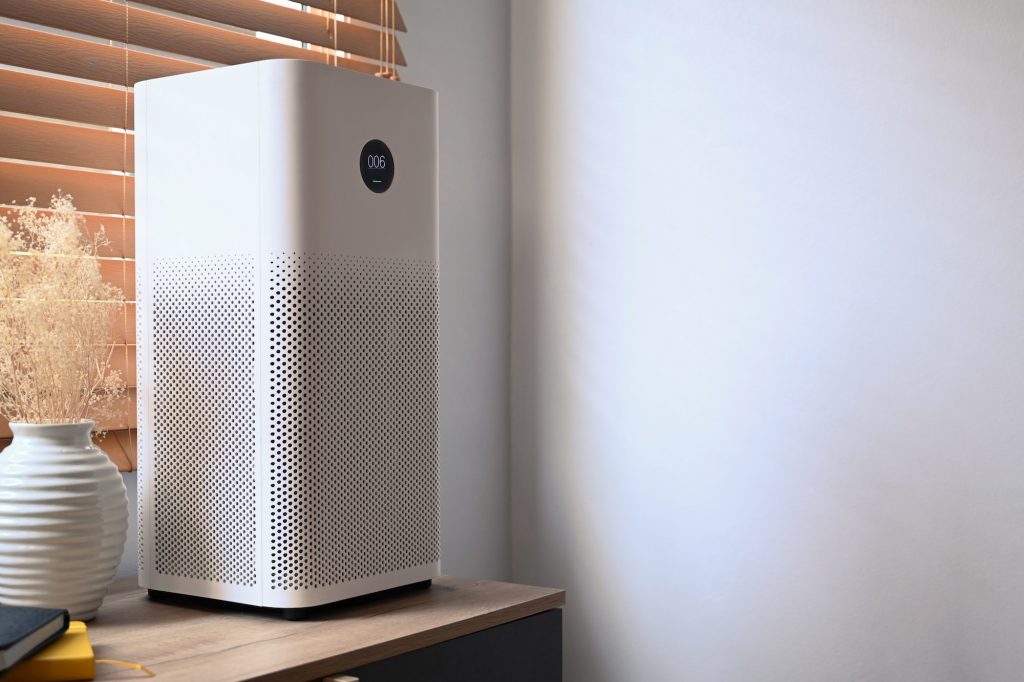
Introduction
We all know that air is essential to our survival, but did you know that the air inside your home can be just as important as the air outside? Indoor air quality is a growing concern, as it can significantly impact our health and well-being. Poor air quality can lead to various health problems, from respiratory issues to headaches and fatigue. In this article, we’ll explore the science of indoor air quality, including the types of pollutants found in our homes, how indoor air quality is measured, and the health impacts of poor air quality.
Understanding the Science of Indoor Air Quality
Indoor air quality is the air quality inside a building or a home. Various pollutants, including chemicals, biological particles, and particulate matter, can impact this. Indoor air quality is measured using multiple methods, including air sampling and continuous monitoring.
There are two main types of indoor air pollutants: biological and chemical. Natural contaminants include mould, bacteria, and viruses, while chemical pollutants include volatile organic compounds (VOCs) and radon. VOCs are chemicals released into the air from various sources, including cleaning products, paints, and furniture. Radon is a naturally occurring gas that can be found in homes and is a known carcinogen.
Familiar Sources of Indoor Air Pollution
Indoor air pollution can come from a variety of sources, both natural and artificial. Natural sources of indoor air pollution include mould, bacteria, and radon, while human activities can release chemicals and particulate matter into the air. Familiar sources of indoor air pollution include smoking, cooking, cleaning, and using personal care products.
Health Impacts of Poor Indoor Air Quality
Poor indoor air quality can have a range of adverse health impacts. Respiratory problems are common, including allergies, asthma, and bronchitis. Poor air quality can also lead to headaches, fatigue, and other symptoms of poor health. Poor indoor air quality has sometimes been linked to heart disease and cancer.
Improving Indoor Air Quality
Improving indoor air quality is essential to protect our health and well-being. There are several steps we can take to improve the air quality in our homes, including:
- Ventilation: Proper ventilation is critical to improving indoor air quality. This means ensuring enough fresh air is circulating in your home, and those indoor air pollutants are effectively removed.
- Air purifiers: Air purifiers can be an effective way to remove pollutants from the air in your home. Several different types of air purifiers are available, including HEPA filters, activated carbon filters, and ionizing air purifiers.
- Proper maintenance of heating, cooling, and ventilation systems: Regular maintenance is essential to ensure they function correctly and do not release pollutants into the air.
- Elimination of indoor pollution sources: Reducing the sources of indoor air pollution is an essential step in improving indoor air quality. This can be achieved by using low-emission products, reducing chemicals, and avoiding activities that generate pollutants, such as smoking.
Choosing the Right Air Purifier
When choosing an air purifier, it’s essential to consider a range of factors, including:
- Types of air purifiers: There are several different types of air purifiers available, including HEPA filters, activated carbon filters, and ionizing air purifiers.
- Filter types: Different air purifiers use filters to remove pollutants from the air. HEPA filters are highly effective, while activated carbon filters can help to remove odours and chemicals from the air.
- Room size and air exchange rate: The room size you need to purify and the rate at which air is exchanged in that room will impact the type and size of air purifier you need.
The Benefits of Clean Indoor Air
Improving indoor air quality can have a range of positive impacts on our health and well-being. Clean indoor air can:
- Improve health: Clean indoor air can help to reduce the risk of respiratory problems, allergies, and other health issues.
- Enhance comfort and productivity: Clean indoor air can improve a space’s overall comfort and productivity, making it a more enjoyable and efficient place to be.
- Reduce the risk of chronic diseases: Poor indoor air quality has been linked to various chronic diseases, including heart disease and cancer. Improving indoor air quality can help to reduce the risk of these diseases.
Conclusion
In conclusion, indoor air quality is a critical concern, as it can significantly impact our health and well-being. Understanding the science of indoor air quality, including the types of pollutants found in our homes, how indoor air quality is measured, and the health impacts of poor air quality, are essential to improving the air quality in our homes. Improving indoor air quality can be achieved through proper ventilation, using air purifiers, and eliminating indoor pollution sources. Clean indoor air can improve our health, enhance our comfort and productivity, and reduce the risk of chronic diseases.
FAQs
- What is indoor air quality? Indoor air quality is the air quality inside a building or a home.
- What are the common sources of indoor air pollution? Familiar sources of indoor air pollution include smoking, cooking, cleaning, and using personal care products.
- What are the health impacts of poor indoor air quality? Poor indoor air quality can lead to various health problems, including respiratory issues, headaches, and fatigue, and has been linked to heart disease and cancer.
- How can I improve indoor air quality in my home? Improving indoor air quality can be achieved through proper ventilation, air purifiers, and eliminating indoor pollution sources.
- What type of air purifier is best for my home? The type of air purifier that is best for your home will depend on the size of the room, the rate at which air is exchanged in the room, and the type of pollutants you need to remove. Consider using a HEPA filter, an activated carbon filter, or an ionizing air purifier.

